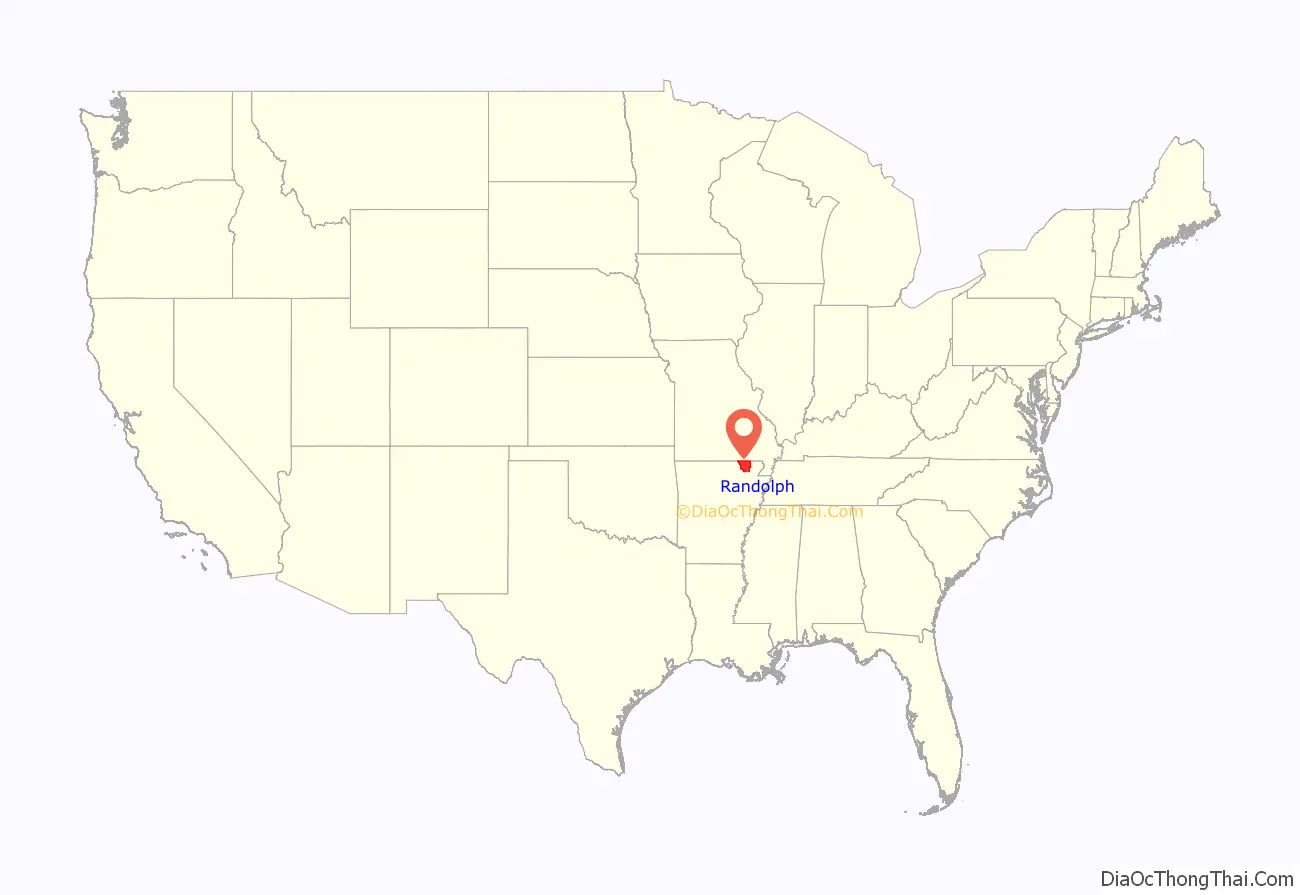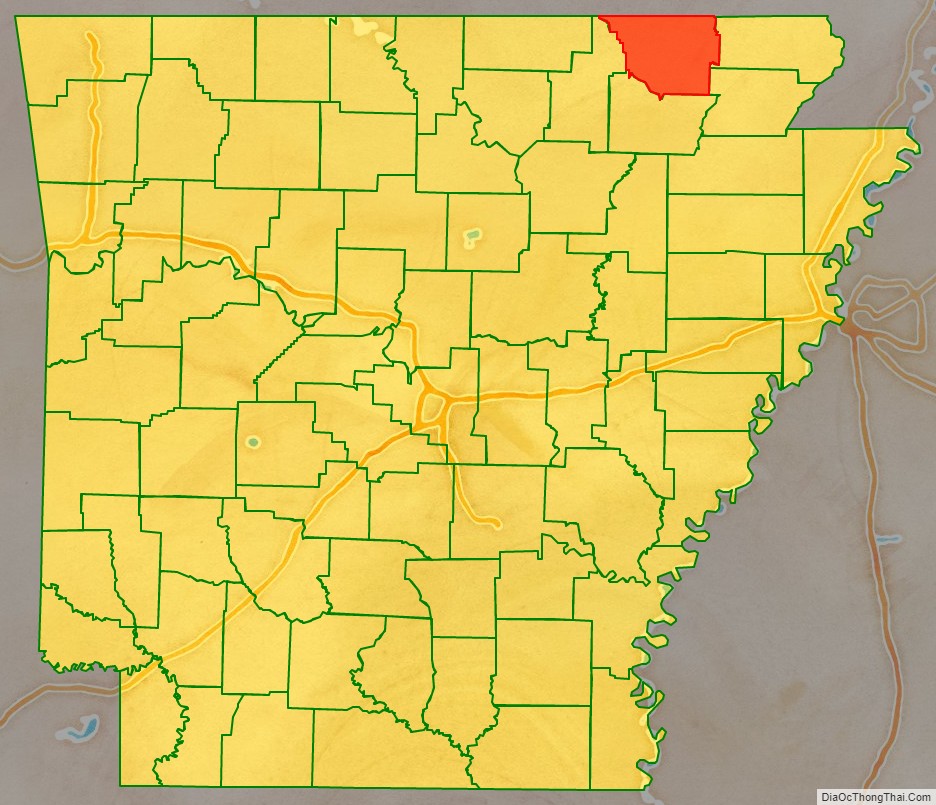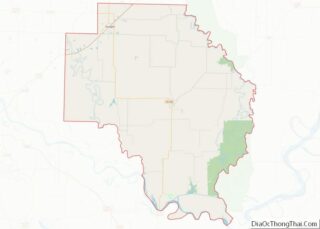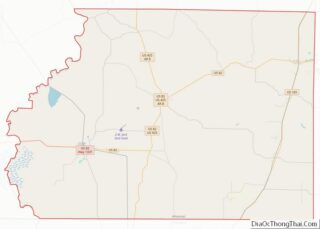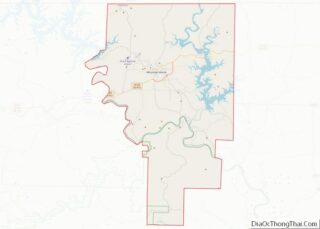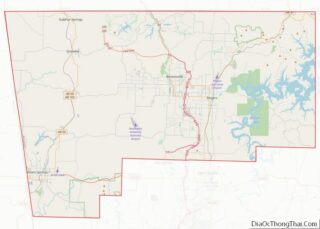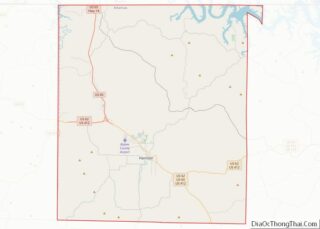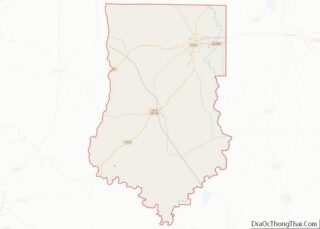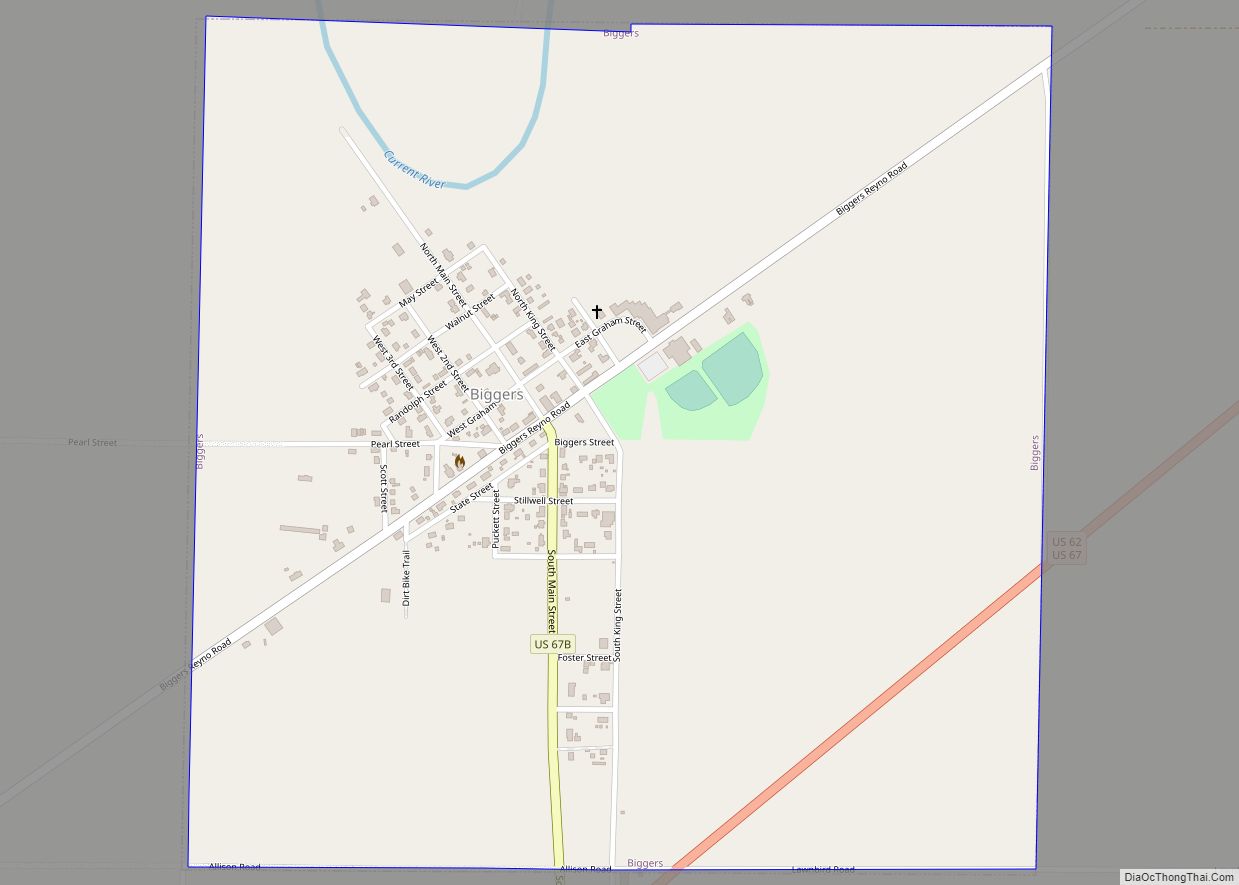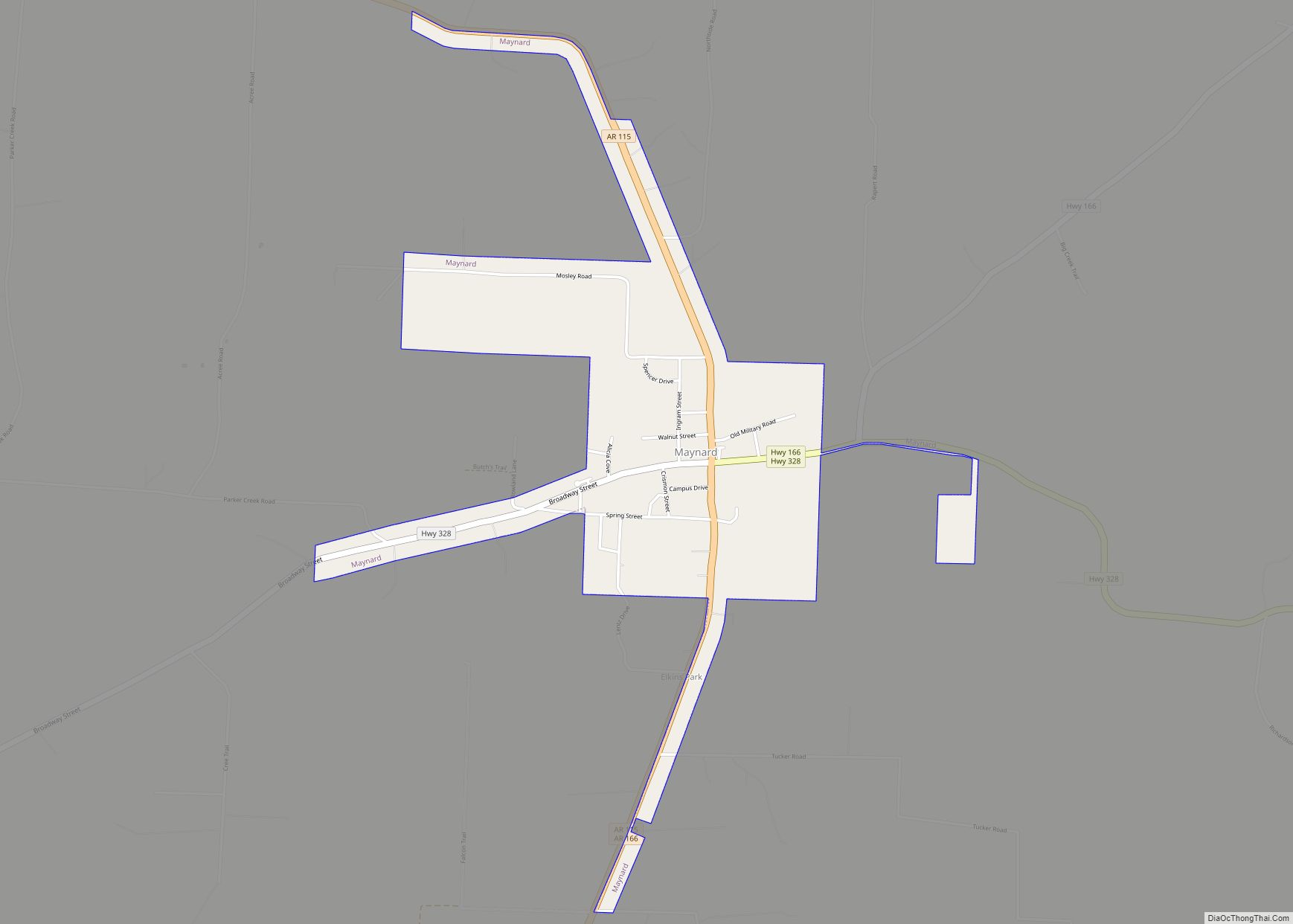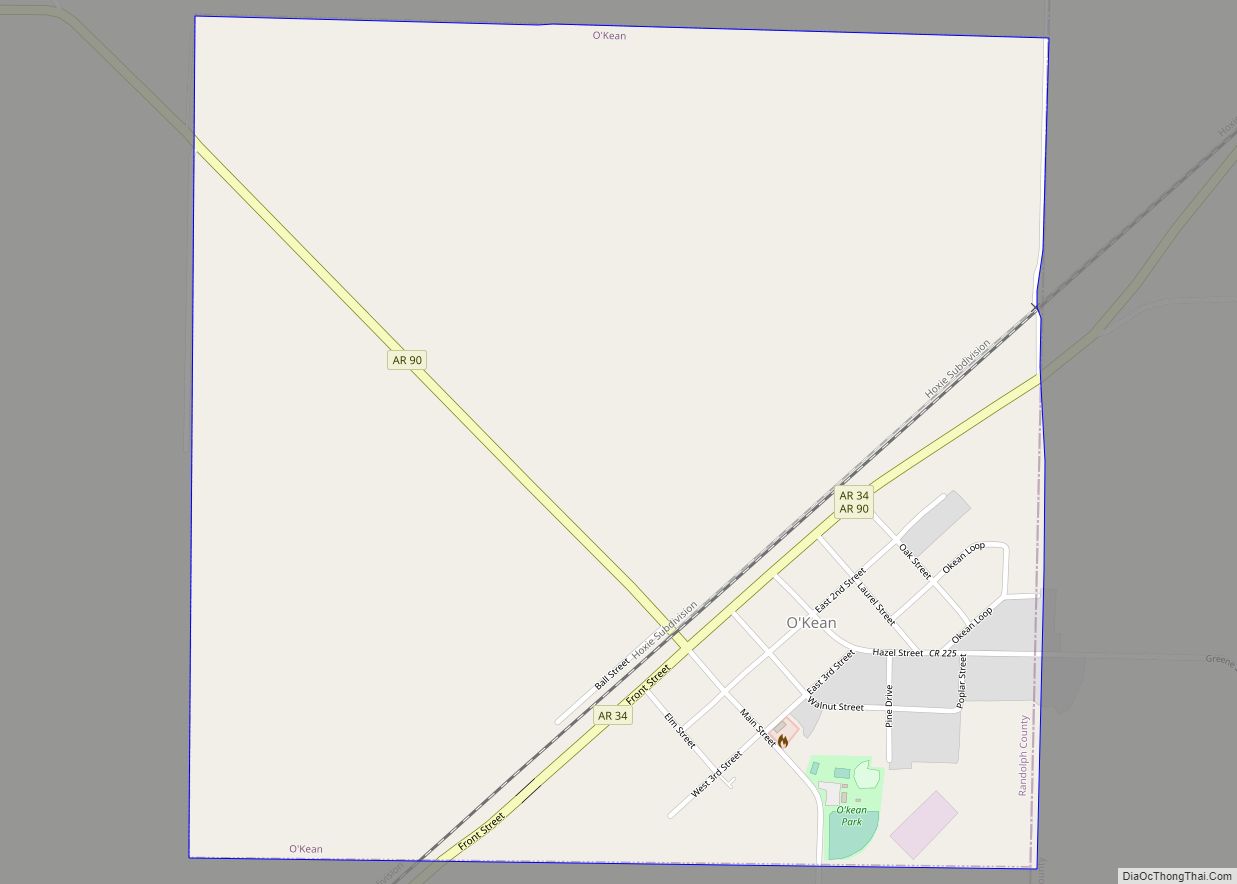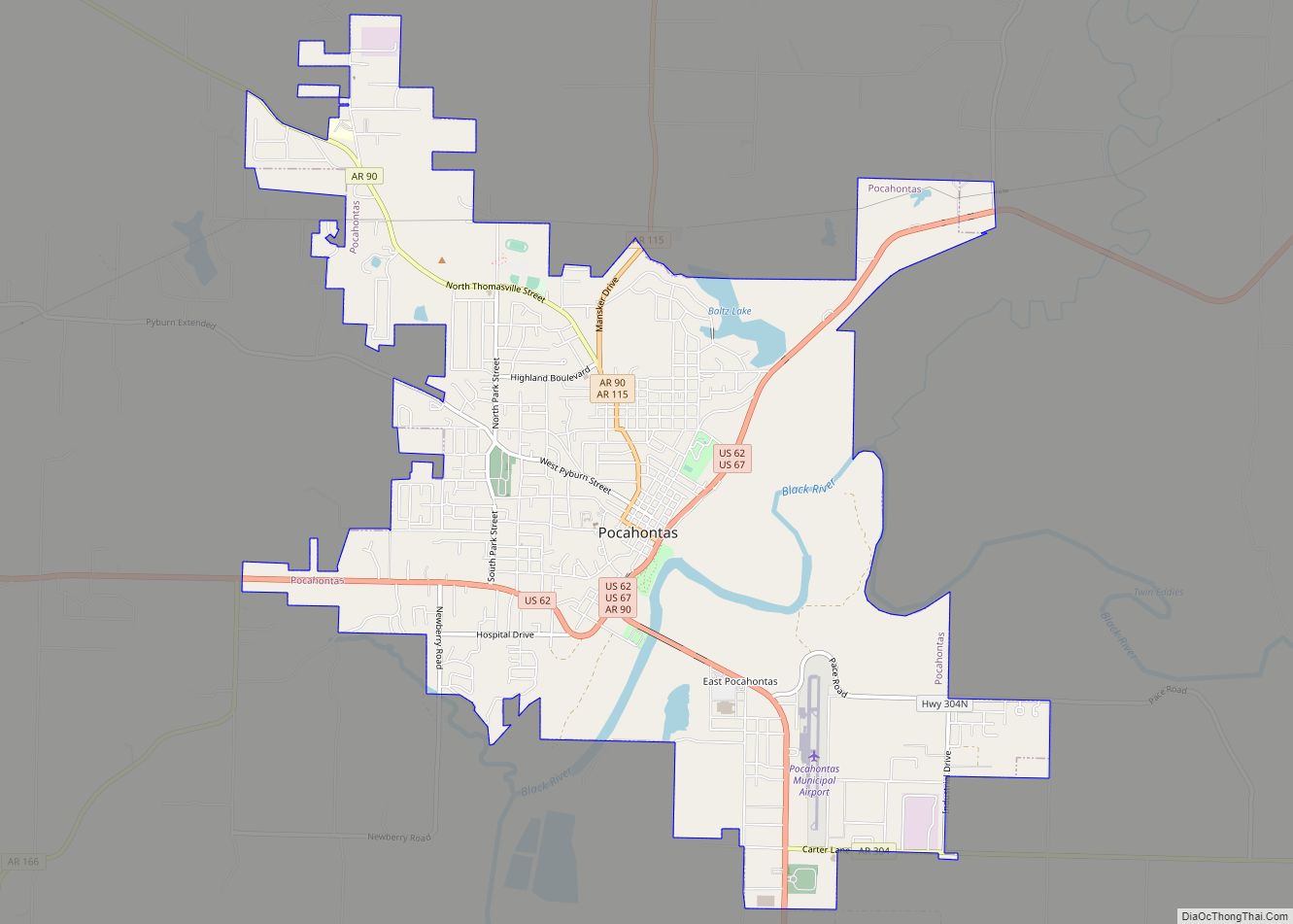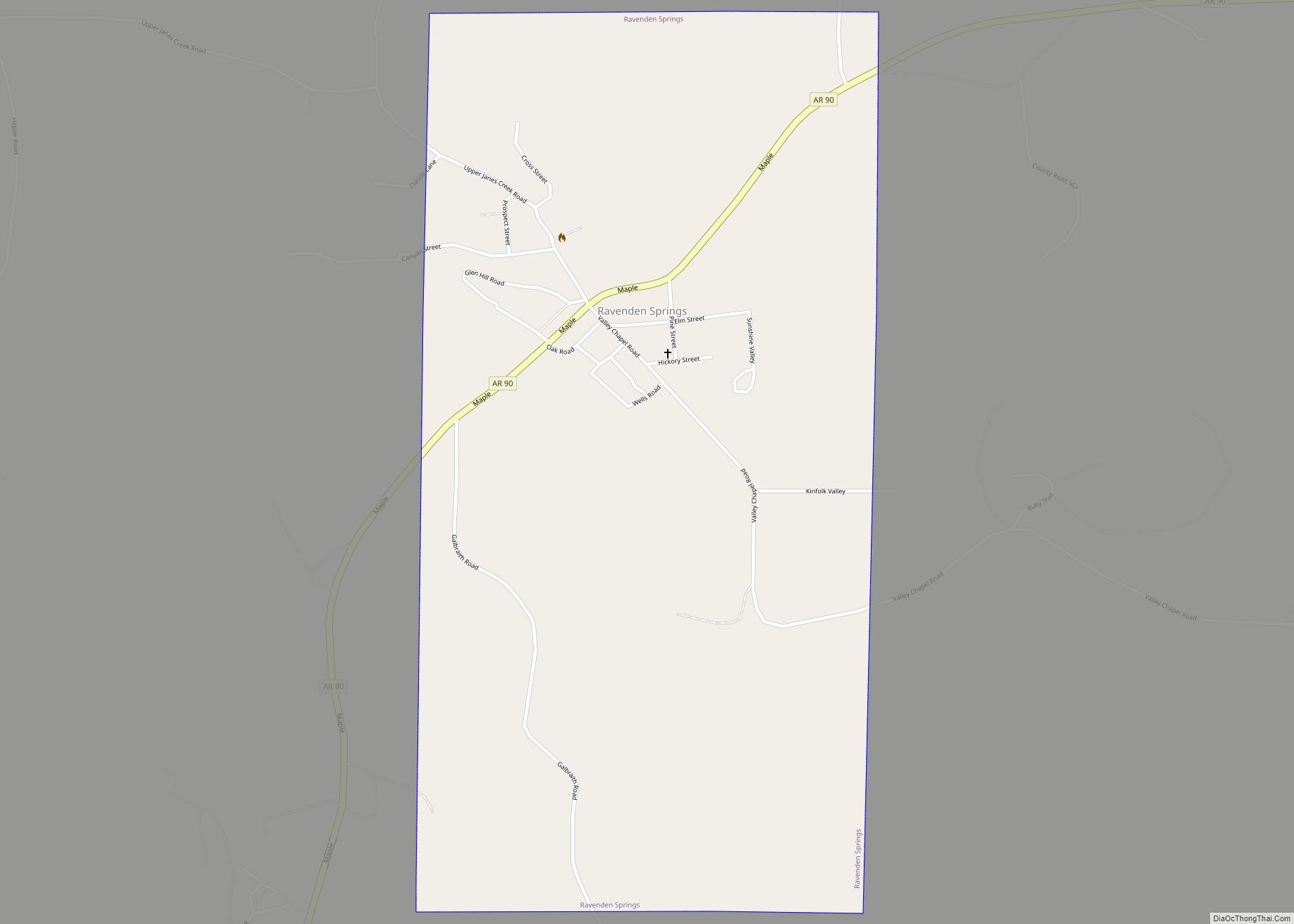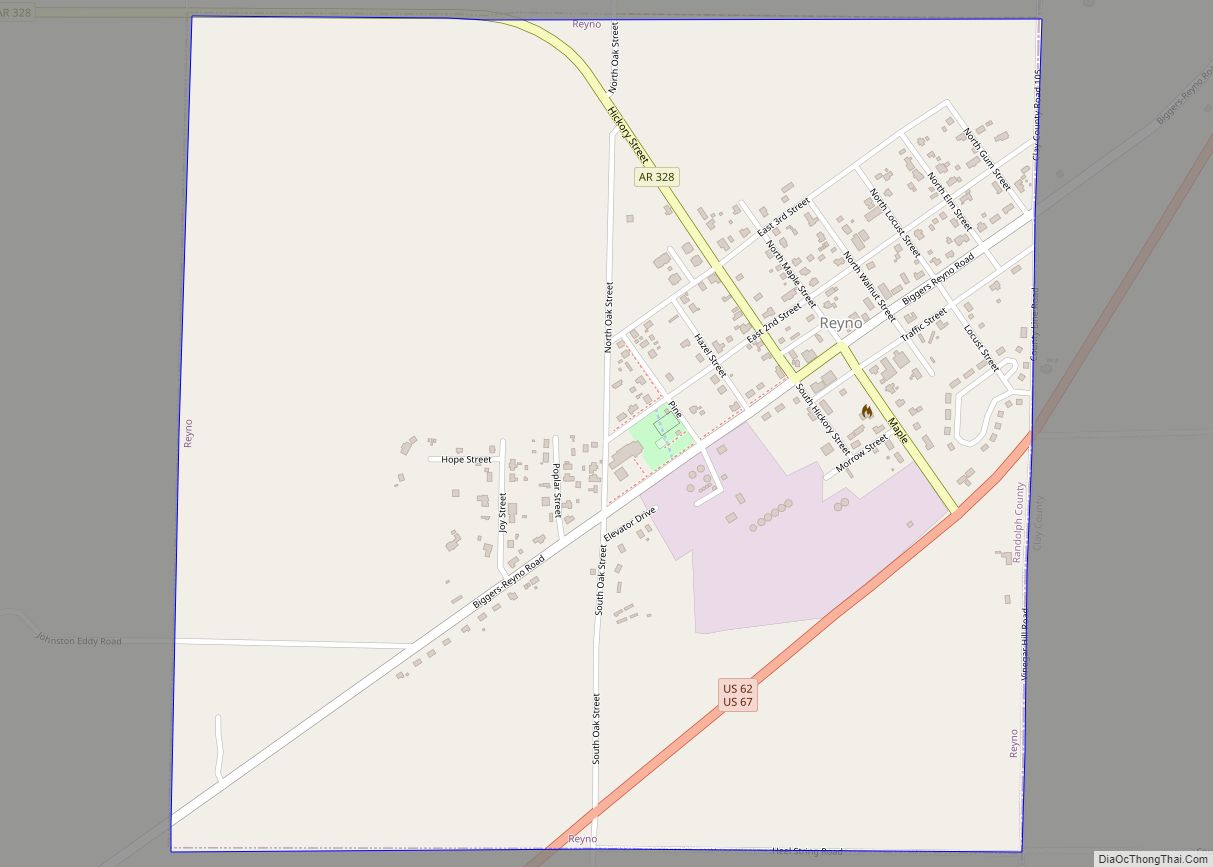Randolph County is located between the Ozark Mountains and Arkansas Delta in the U.S. state of Arkansas. The county is named for John Randolph, a U.S. senator from Virginia influential in obtaining congressional approval of the Louisiana Purchase, which includes today’s Randolph County. Created as Arkansas’s 32nd county on October 29, 1835, Randolph County has two incorporated cities, including Pocahontas, the county seat and most populous city. The county is also the site of numerous unincorporated communities and ghost towns.
Crossed by five rivers, most of Randolph County contains foothills and valleys typical of the Ozarks. However, the eastern side of the county is largely flat with fertile soils typical of the Delta, with the Black River roughly dividing the regions. The county contains three protected areas: two Wildlife Management Areas and Davidsonville Historic State Park, which preserves and interprets an early pioneer settlement. Other historical features such as log cabins, one-room school houses, community centers, and museums describe the history and culture of Randolph County.
Randolph County occupies 656.04 square miles (169,910 ha) and contained a population of 18,571 as of the 2020 Census. The economy is largely based on agriculture and small manufacturing. Poverty and unemployment rates are above national averages, but steady. Household incomes are below state and national averages. Politically, Randolph County has transitioned from reliably Democratic to steadily Republican since the mid-20th century.
Randolph County is served by two school districts, Pocahontas School District and Maynard School District, and parts of three others. Higher education is provided at Black River Technical College, a public two-year community college in Pocahontas. St. Bernards Five Rivers Medical Center in Pocahontas is a community hospital providing primary care in the county. Although no Interstate highways serve Randolph County, the county has access to three United States highways (U.S. Route 62 [US 62], US 67, and US 412) and eleven Arkansas state highways. Randolph County is also served by one public owned/public use general aviation airport, Pocahontas Municipal Airport, and six community water systems provide potable water to customers in the county.
| Name: | Randolph County |
|---|---|
| FIPS code: | 05-121 |
| State: | Arkansas |
| Founded: | October 29, 1835 |
| Named for: | John Randolph |
| Seat: | Pocahontas |
| Largest city: | Pocahontas |
| Total Area: | 656.04 sq mi (1,699.1 km²) |
| Land Area: | 651.83 sq mi (1,688.2 km²) |
| Total Population: | 18,571 |
| Population Density: | 28/sq mi (11/km²) |
| Time zone: | UTC−6 (Central) |
| Summer Time Zone (DST): | UTC−5 (CDT) |
| Website: | randolphcounty.arkansas.gov |
Randolph County location map. Where is Randolph County?
Randolph County Road Map
Geography
Randolph County is located where the foothills of the Ozark Mountains intersect the Arkansas Delta (in Arkansas, usually referred to as “the Delta”) in the southeast part of the county. Two of the six primary geographic regions of Arkansas, the Ozarks are a mountainous subdivision of the U.S. Interior Highlands, and the Arkansas Delta is a subregion of the Mississippi Alluvial Plain, which is a flat area consisting of rich, fertile sediment deposits from the Mississippi River between Louisiana and Illinois. The Black River roughly divides the two regions in Randolph County. According to the U.S. Census Bureau, the county has a total area of 656.04 square miles (1,699.1 km), of which 651.83 square miles (1,688.2 km) is land and 4.21 square miles (10.9 km) (0.6%) is water.
The county is located approximately 144 miles (232 km) northeast of Little Rock, 108 miles (174 km) northwest of Memphis, Tennessee, and 204 miles (328 km) southwest of St. Louis, Missouri. Randolph County is surrounded by three Delta counties: Clay County to the east, Greene County to the southeast, Lawrence County to the south, one Ozark county, Sharp County, to the west, and two Missouri counties, Oregon County to the northwest, and Ripley County to the northeast.
Hydrology
Water is an extremely important part of Randolph County’s geography, history, economy, and culture. The many rivers, streams, and ditches crossing the county have featured prominently since prehistoric times, and many of the hundreds of archaeological sites are along waterways. Tribes of Lenape, Shawnee, and Cherokee were settled in the area along rivers but left the area following the 1811–12 New Madrid earthquakes.
Randolph County is home to five major rivers: Black River, Current River, Eleven Point River, Fourche River, and Spring River.
Running from east to west toward its own mouth in the southern tip of Randolph County, the Black receives the Current River and Fourche River east of Pocahontas. The Current River serves as the northeastern county boundary with Clay County before turning southwest, passing Reyno and Biggers and meeting the Black east of Pocahontas. The Fourche River enters Randolph County near Doniphan, Missouri and runs south to meet the Black east of Pocahontas. The Black meets the Spring at the southern tip of Randolph County near Black Rock.
The Spring River serves as the county’s southwestern boundary with Lawrence County between Davidsonville Historic State Park and Ravenden. The Eleven Point River enters from Missouri near Billmore and runs south to empty into the Spring just west of the state park.
Rivers brought early prosperity to the county during white settlement for navigation. Control of the rivers and Pitman’s Ferry led to military action in the county during the Civil War, including a skirmish in 1862. Following the war, natural mineral springs purported to have healing properties attracted visitors to Warm Springs and Ravenden Springs.
Protected areas
Randolph County contains one state park, Davidsonville Historic State Park, and two Wildlife Management Areas (WMAs), Dave Donaldson/Black River WMA and Robert L. Hankins/Mud Creek Upland WMA, owned by the Arkansas Game and Fish Commission.
Black River WMA preserves bottomland hardwood forest habitat and wintering habitat for migratory birds. Created in 1957, Black River WMA contains over 25,000 acres (10,000 ha) total and extends into Clay and Greene counties. Mud Creek Upland WMA was created in 1989 with 1,250 acres (510 ha) of upland hardwood forest. The area is open to birding, hunting, and hiking.
Davidsonville Historic State Park is a 163-acre (66 ha) history state park focused on the interpretation and archaeology of the abandoned frontier town of Davidsonville. Once a very important stop on the Black River and Southwest Trail within Arkansaw Territory, Davidsonville was abandoned by 1836 following the decline of river transport and the shifting of the Southwest Trail. The park is owned and operated by the Arkansas Department of Parks and Tourism.
